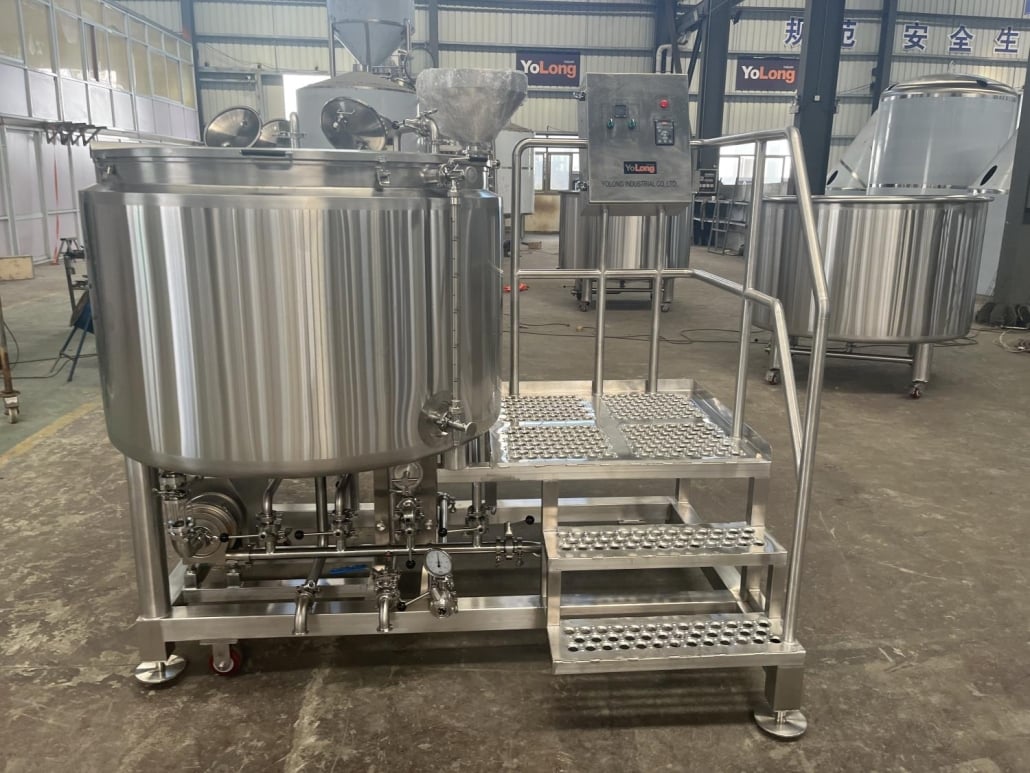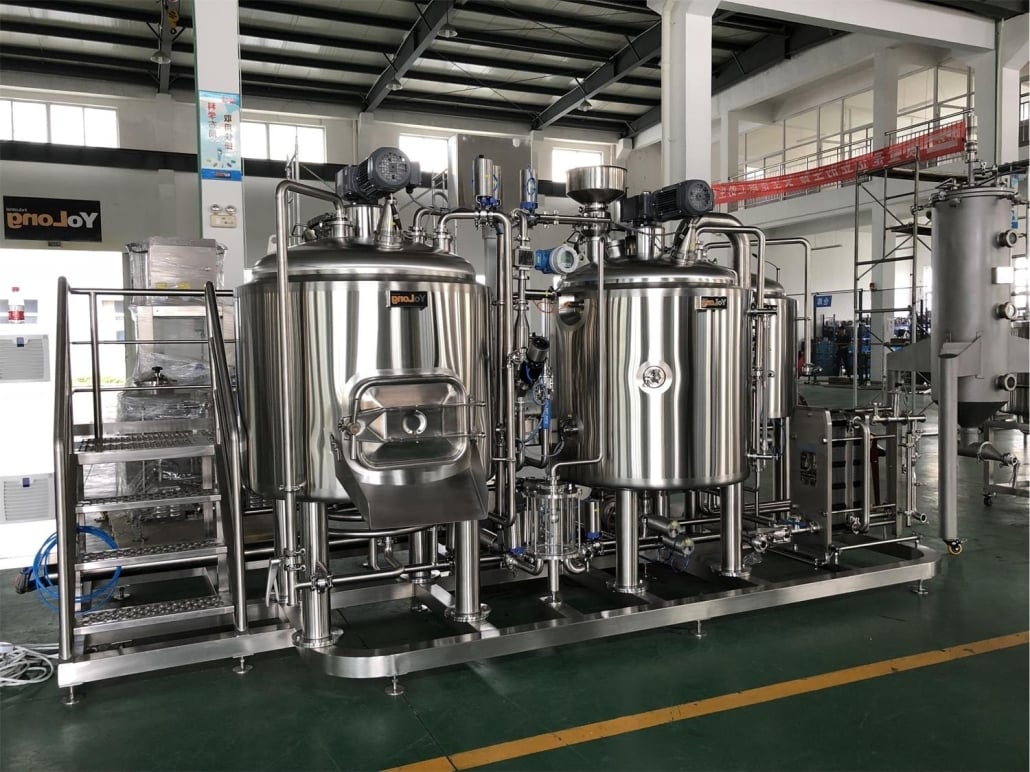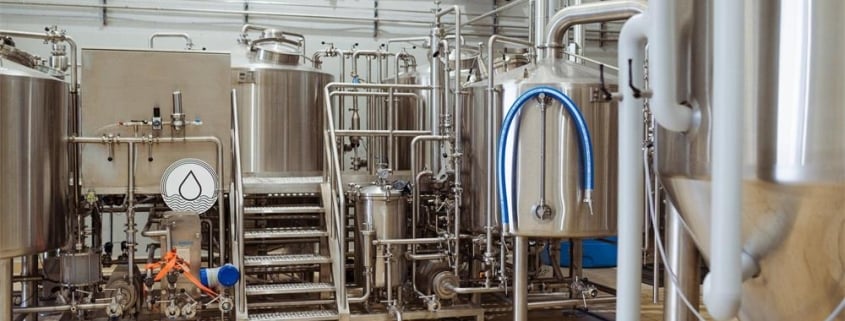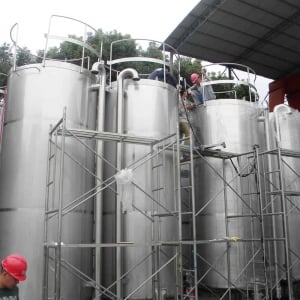Professional Beer Brewing Equipment
Dreaming of brewing beer on a larger scale? Perhaps you’re a passionate homebrewer ready to take the next step, or maybe you envision opening your own brewery. Whatever your motivation, venturing into professional brewing necessitates a significant investment in equipment. This guide will equip you with the knowledge to navigate the world of professional beer brewing equipment, from understanding the essential components to selecting the perfect system for your needs.
Essential Equipment for Professional Brewing
Professional brewing equipment encompasses a vast array of systems and tools, each playing a crucial role in the brewing process. Here’s a breakdown of the key players:
| Equipment Category | Description |
|---|---|
| Brewhouse | The heart of the brewing operation, the brewhouse consists of a mash tun, lauter tun, brew kettle, and hot liquor tank (HLT). In the mash tun, crushed grains are steeped in hot water to convert starches into sugars. The lauter tun separates the sweet wort (sugar-rich liquid) from the spent grains. The wort is then boiled in the kettle, where hops are added for bitterness, aroma, and preservation. Finally, the HLT provides hot water for mashing and other brewing processes. |
| Fermentation Tanks | These vessels house the wort after it’s transferred from the brewhouse. Yeast is pitched into the wort, triggering fermentation, the process that converts sugars into alcohol and carbon dioxide. Professional breweries utilize various fermentation tank configurations, including cylindroconical tanks (CCTs) that allow for easier yeast separation and clearer beer. |
| Brite Tanks | Once fermentation is complete, the beer is transferred to brite tanks for conditioning, clarification, and carbonation. Brite tanks are typically pressurized and equipped with a carbonation stone to achieve the desired level of fizz. |
| Filtration Equipment | While some beer styles are bottled or kegged unfiltered, many professional breweries utilize filters to remove yeast and achieve a bright, polished appearance. Options include plate filters, cartridge filters, and centrifuge separators. |
| Cleaning and Sanitation Systems | Maintaining a clean and sanitary environment is paramount in professional brewing. Cleaning and sanitation systems encompass a variety of tools and chemicals to ensure hygiene throughout the brewing process. |
| Kegging and Bottling Lines | For packaging finished beer, breweries employ kegging or bottling lines. Kegging lines fill, purge, and seal kegs for distribution to bars and restaurants. Bottling lines clean, fill, cap, and label bottles for retail sale. |

Understanding the Brewing Process
Before diving into the specifics of equipment selection, let’s revisit the brewing process itself. This will provide a framework for understanding how each piece of equipment contributes to the creation of your final product.
- Malting and Milling: The journey begins with malted barley, a specially processed grain that’s been induced to germinate. The malting process unlocks enzymes that convert starches into fermentable sugars. At the brewery, the malt is cracked or milled into a coarse flour-like consistency, ready for mashing.
- Mashing: Milled grain is steeped in hot water within the mash tun. The mashing temperature range influences the types of sugars extracted from the malt, ultimately impacting the flavor profile of the beer. After mashing is complete, the sugary liquid extract, called wort, is separated from the spent grains in the lauter tun.
- Wort Boiling: The wort is transferred to the brew kettle and brought to a boil. Hops are added during the boil for bitterness, aroma, and preservation. Additionally, boiling helps to sterilize the wort and concentrate its sugars.
- Fermentation: The cooled wort is transferred to fermentation tanks where yeast is pitched. Yeast consumes the wort’s sugars and produces alcohol and carbon dioxide as byproducts. The fermentation process plays a crucial role in determining the beer’s style, flavor, and aroma.
- Conditioning, Carbonation, and Packaging: Once fermentation is complete, the beer undergoes conditioning in brite tanks. Here, the beer clarifies, and some breweries may add additional features like cold conditioning or dry hopping. Carbonation is achieved by either spunding (natural carbonation) or by force carbonation using a carbonation stone. Finally, the finished beer is packaged in kegs or bottles for distribution or sale.
Choosing Professional Brewing Equipment
Selecting the perfect professional brewing equipment hinges on several critical factors:
- Production Capacity: This refers to the volume of beer you intend to produce. Breweries range from small, nano-breweries producing a few gallons per batch to large production breweries churning out hundreds or even thousands of barrels annually. Your production capacity will dictate the size and capabilities of the equipment you need.
- Available Space: Professional brewing equipment can have a significant footprint. Carefully assess the space available in your brewery and choose equipment that fits comfortably without compromising workflow or safety.
- Budget: Professional brewing equipment represents a substantial investment. Determine your budget upfront and consider the cost of not only the equipment itself but also installation, ongoing maintenance, and potential upgrades.
- Scalability: If you envision future growth, consider equipment that can be easily scaled up in production capacity. Modular systems or equipment with expandable features can help you accommodate increased demand down the line.
- Beer Styles: The type of beer you plan to produce can influence your equipment choices. For instance, lagers require cold storage for extended fermentation periods, so factor in the need for dedicated fermentation tanks and temperature control systems.
- Level of Automation: Professional brewing equipment ranges from manual to fully automated systems. While manual systems offer greater control over the brewing process, they require more manpower. Automated systems, on the other hand, streamline production but come at a higher cost. Consider your budget, desired level of control, and available workforce when making this decision.
Features of Professional Beer Brewing Equipment
Beyond the core functionality, professional brewing equipment boasts a variety of features that enhance efficiency, consistency, and control throughout the brewing process. Here’s a glimpse into some of the most common features:
- Heating and Cooling Systems: Precise temperature control is crucial in various stages of brewing. Brewhouses are equipped with heating elements and heat exchangers to maintain mashing and boiling temperatures. Additionally, fermentation tanks often incorporate glycol jackets or cooling coils for temperature regulation during fermentation.
- Automated Controls: Modern brewing systems often feature integrated control panels that allow for automated programming of mashing profiles, boil cycles, and fermentation temperatures. These systems not only save time and labor but also ensure consistent results from batch to batch.
- CIP (Cleaning In Place) Systems: Maintaining a sanitary brewing environment is paramount. CIP systems utilize automated cleaning cycles that circulate cleaning solutions throughout the brewing equipment, minimizing manual cleaning requirements.
- Monitoring Systems: Advanced brewing systems may incorporate sensors that monitor critical parameters like temperature, pH, and dissolved oxygen levels. Real-time data from these sensors allows brewers to closely monitor the brewing process and make adjustments as needed.
Professional Beer Brewing Equipment Price Range
The cost of professional brewing equipment varies widely depending on factors like production capacity, level of automation, and brand reputation. Here’s a general breakdown of the price range for some key equipment categories:
| Equipment Category | Price Range (USD) |
|---|---|
| Brewhouse (3-barrel system) | $30,000 – $100,000+ |
| Fermentation Tanks (3-barrel) | $5,000 – $20,000+ per tank |
| Brite Tanks (3-barrel) | $4,000 – $15,000+ per tank |
| Filtration Equipment | $10,000 – $50,000+ |
| Kegging/Bottling Lines (basic) | $15,000 – $50,000+ |
It’s important to remember that these are just ballpark figures. Obtaining quotes from various equipment suppliers is essential for determining the most accurate pricing for your specific needs.
Suppliers of Professional Beer Brewing Equipment
Numerous reputable companies supply professional beer brewing equipment, each with its own strengths and specialties. Here are a few prominent examples:
- ME Brewers: A leading manufacturer offering a comprehensive selection of brewing equipment, from small pilot systems to large production breweries.
- D.G. Yuengling & Son, Inc.: A well-established company known for its brewing tanks and fermentation systems.
- Stahl Tank: Renowned for their high-quality, customizable stainless steel tanks, suitable for various brewing applications.
- Craftmaster: Specializes in brewing equipment for smaller breweries and brewpubs.
- Brewmation: A provider of sophisticated brewing control systems and automation solutions.
Installation, Operation, and Maintenance of Professional Brewing Equipment
Professional brewing equipment requires proper installation, operation, and maintenance to ensure optimal performance and longevity.
- Installation: Most professional brewing equipment suppliers offer installation services. Alternatively, breweries can contract with qualified engineering firms for equipment installation.
- Operation: Brewers should undergo comprehensive training on the operation and maintenance of their specific equipment. This training typically involves familiarization with control systems, cleaning procedures, and troubleshooting common issues.
- Maintenance: Regular maintenance is vital for keeping brewing equipment functioning efficiently and hygienically. This includes routine cleaning procedures, lubrication of moving parts, and periodic inspections for wear and tear. Preventative maintenance can help to avoid costly breakdowns and production delays.
Choosing a Professional Brewing Equipment Supplier
Selecting the right supplier for your professional brewing equipment is a crucial decision. Here are some key factors to consider:
- Reputation and Experience: Choose a supplier with a proven track record in the brewing industry. Look for companies that have experience working with breweries of your size and production capacity.
- Equipment Quality: Investigate the quality of materials and construction used in the equipment. Reputable suppliers prioritize durable, stainless steel construction that can withstand the rigors of a professional brewing environment.
- Warranty and Support: Ensure the supplier offers a comprehensive warranty on their equipment and provides ongoing technical support. Prompt and reliable support is essential for addressing any issues that may arise after installation.
- Scalability: As mentioned earlier, consider a supplier that offers equipment with scalability features if future growth is part of your vision. This could involve modular systems or equipment designed for easy expansion.
- Cost: While cost is certainly a factor, it shouldn’t be the sole deciding element. The lowest upfront price may not translate to the best long-term value. Factor in quality, warranty, and ongoing support when evaluating the total cost of ownership.

Comparing Professional Brewing Equipment
When comparing different equipment options, consider the following to make an informed decision:
- Manual vs. Automated Systems: Manual systems offer greater control over the brewing process but require more manpower. Automated systems streamline production but come at a higher cost and may limit brewer creativity.
- Electric vs. Steam Heating: Electric heating systems are generally more energy-efficient but may be limited in terms of heating power. Steam heating systems offer powerful heating capabilities but require access to a boiler and related infrastructure.
- Open vs. Closed Fermentation Tanks: Open fermentation tanks allow for easier yeast harvesting but are more susceptible to contamination. Closed fermentation tanks, like CCTs (cylindroconical tanks), minimize contamination risks but require additional equipment for yeast collection.
- Plate vs. Cartridge Filtration: Plate filters offer a high flow rate and are relatively easy to clean. However, they require more frequent replacement of filter plates. Cartridge filters are simpler to change but may have a lower flow rate and higher ongoing filter cost.
Ultimately, the best equipment choice depends on your specific needs, budget, and brewing philosophy.
FAQs
Q: What permits and licenses do I need to operate a professional brewery?
A: Permitting requirements vary depending on your location. Contact your local licensing authority to determine the specific permits and licenses necessary for operating a brewery in your area.
Q: How can I finance the purchase of professional brewing equipment?
A: Several financing options may be available for acquiring professional brewing equipment. These include small business loans, equipment leasing, and crowdfunding.
Q: What resources can help me learn more about professional brewing?
A: Numerous resources are available to aspiring and established brewers, including online forums, industry publications, and brewing schools. The American Brewers Guild (ABG) and the Brewers Association (BA) are excellent resources for brewers of all experience levels.













